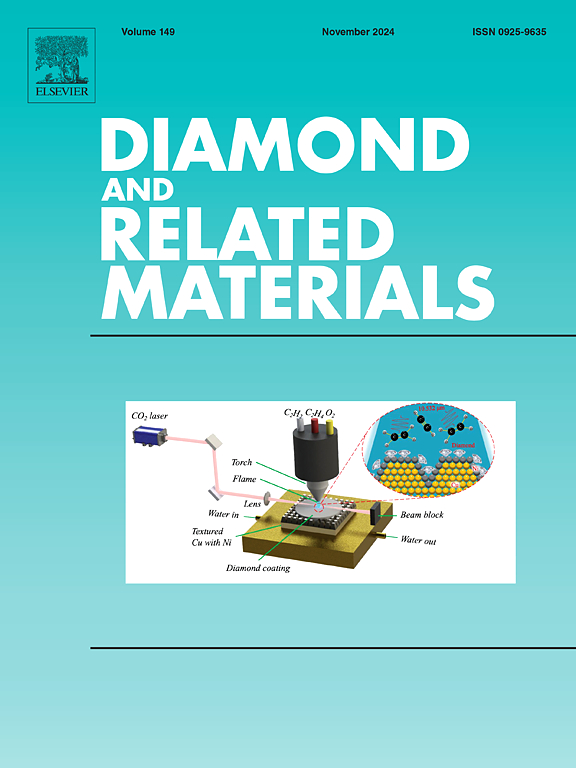半胱氨酸修饰的氧化石墨烯作为黄铜的高效缓蚀剂:实验和计算见解
IF 4.3
3区 材料科学
Q2 MATERIALS SCIENCE, COATINGS & FILMS
引用次数: 0
摘要
氧化石墨烯(GO)以其优异的性能而闻名,已成为一种有前途的耐腐蚀材料。l -半胱氨酸(L-Cys)是一种环保无毒的缓蚀剂,通过环氧环开环共价接枝到氧化石墨烯薄片上,以环氧基中的碳-碳键为目标,保留亲水含氧官能团。通过扫描电镜(SEM)、红外光谱(FTIR)、x射线衍射(XRD)和紫外-可见光谱(UV-vis)分析证实了功能化的成功。采用电化学阻抗谱和极化测量对GO@L-Cys复合材料的缓蚀性能进行了评价。在最佳浓度为100 ppm时,改性氧化石墨烯在保护黄铜免受腐蚀方面的缓蚀效率约为90%,显著优于未改性氧化石墨烯(65%)。表面表征表明,由于L-Cys与铜原子的络合作用,没有腐蚀坑,形成了花状的纳米颗粒层。GO@L-Cys复合材料在黄铜表面的均匀分散进一步增强了阴极保护。此外,蒙特卡罗模拟和非共价相互作用(NCI)分析支持了实验结果,证实了L-Cys与黄铜表面之间的强相互作用。这些发现表明GO@L-Cys复合材料是黄铜合金的高效缓蚀剂,特别是在腐蚀性环境中。本文章由计算机程序翻译,如有差异,请以英文原文为准。

Cysteine-modified graphene oxide as an efficient corrosion inhibitor for brass: Experimental and computational insights
Graphene oxide (GO), renowned for its exceptional properties, has emerged as a promising material for corrosion-resistant applications. L-Cysteine (L-Cys), an eco-friendly and non-toxic corrosion inhibitor, was covalently grafted onto GO flakes via epoxy ring-opening, targeting carbon‑carbon bonds in epoxy groups to preserve the hydrophilic oxygen-containing functional groups. The successful functionalization was confirmed through SEM, FTIR, XRD, and UV–vis spectroscopy analyses. Electrochemical impedance spectroscopy and polarization measurements were employed to evaluate the corrosion inhibition performance of the GO@L-Cys composite. At an optimal concentration of 100 ppm, the modified GO demonstrated an inhibition efficiency of approximately 90 % in protecting brass from corrosion, significantly outperforming unmodified GO (65 %). Surface characterization revealed the absence of corrosion pits and the formation of a flower-like nanoparticle layer, attributed to L-Cys complexation with copper atoms. The uniform dispersion of the GO@L-Cys composite on the brass surface further enhances cathodic protection. Additionally, Monte Carlo simulations and non-covalent interaction (NCI) analyses supported the experimental results, confirming strong interactions between L-Cys and the brass surface. These findings indicate that the GO@L-Cys composite is a highly effective corrosion inhibitor for brass alloys, particularly in aggressive environments.
求助全文
通过发布文献求助,成功后即可免费获取论文全文。
去求助
来源期刊

Diamond and Related Materials
工程技术-材料科学:综合
CiteScore
6.00
自引率
14.60%
发文量
702
审稿时长
2.1 months
期刊介绍:
DRM is a leading international journal that publishes new fundamental and applied research on all forms of diamond, the integration of diamond with other advanced materials and development of technologies exploiting diamond. The synthesis, characterization and processing of single crystal diamond, polycrystalline films, nanodiamond powders and heterostructures with other advanced materials are encouraged topics for technical and review articles. In addition to diamond, the journal publishes manuscripts on the synthesis, characterization and application of other related materials including diamond-like carbons, carbon nanotubes, graphene, and boron and carbon nitrides. Articles are sought on the chemical functionalization of diamond and related materials as well as their use in electrochemistry, energy storage and conversion, chemical and biological sensing, imaging, thermal management, photonic and quantum applications, electron emission and electronic devices.
The International Conference on Diamond and Carbon Materials has evolved into the largest and most well attended forum in the field of diamond, providing a forum to showcase the latest results in the science and technology of diamond and other carbon materials such as carbon nanotubes, graphene, and diamond-like carbon. Run annually in association with Diamond and Related Materials the conference provides junior and established researchers the opportunity to exchange the latest results ranging from fundamental physical and chemical concepts to applied research focusing on the next generation carbon-based devices.
 求助内容:
求助内容: 应助结果提醒方式:
应助结果提醒方式:


